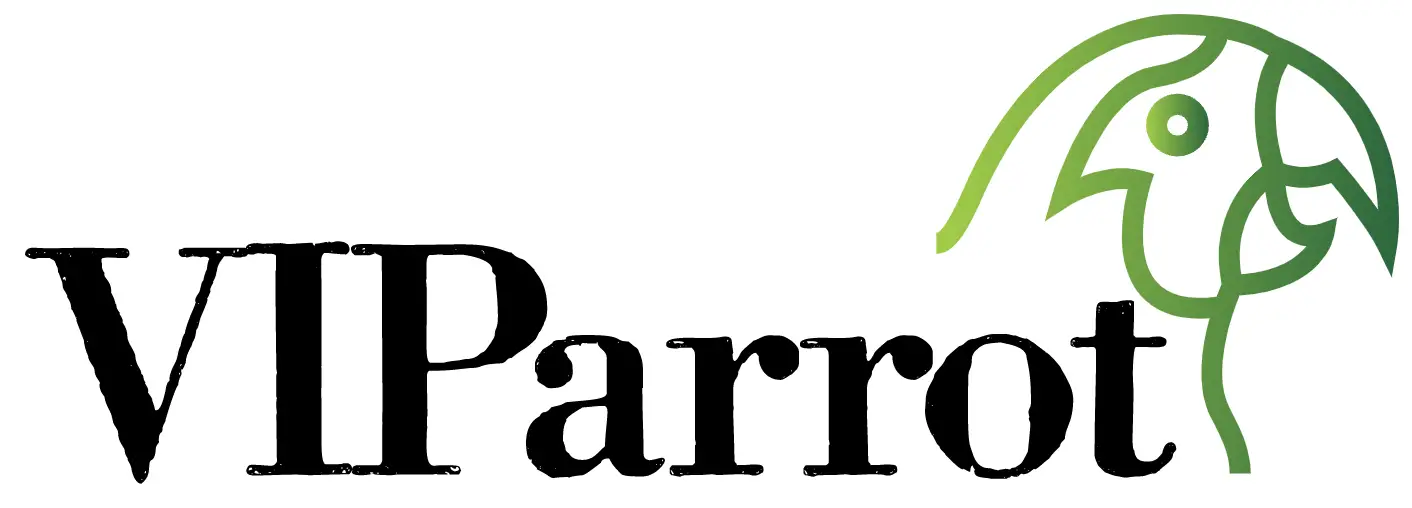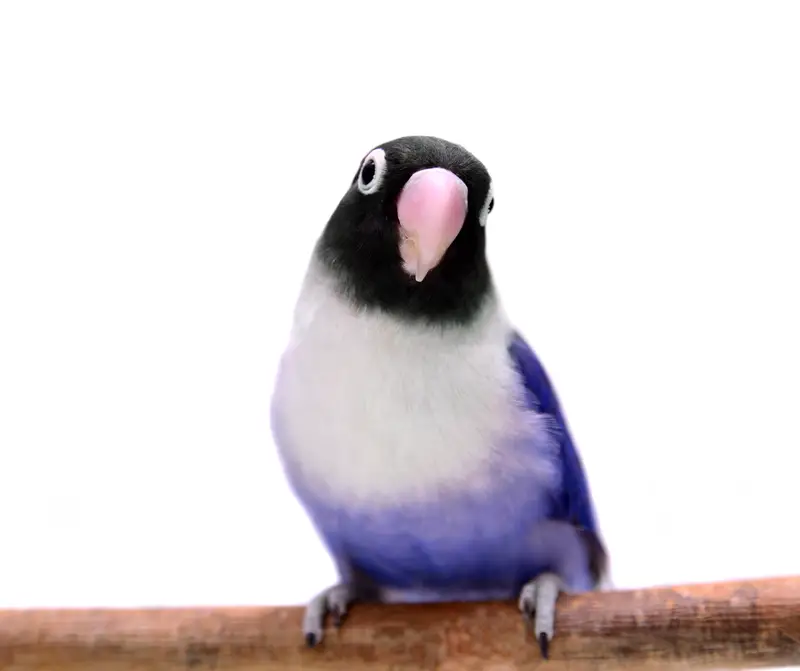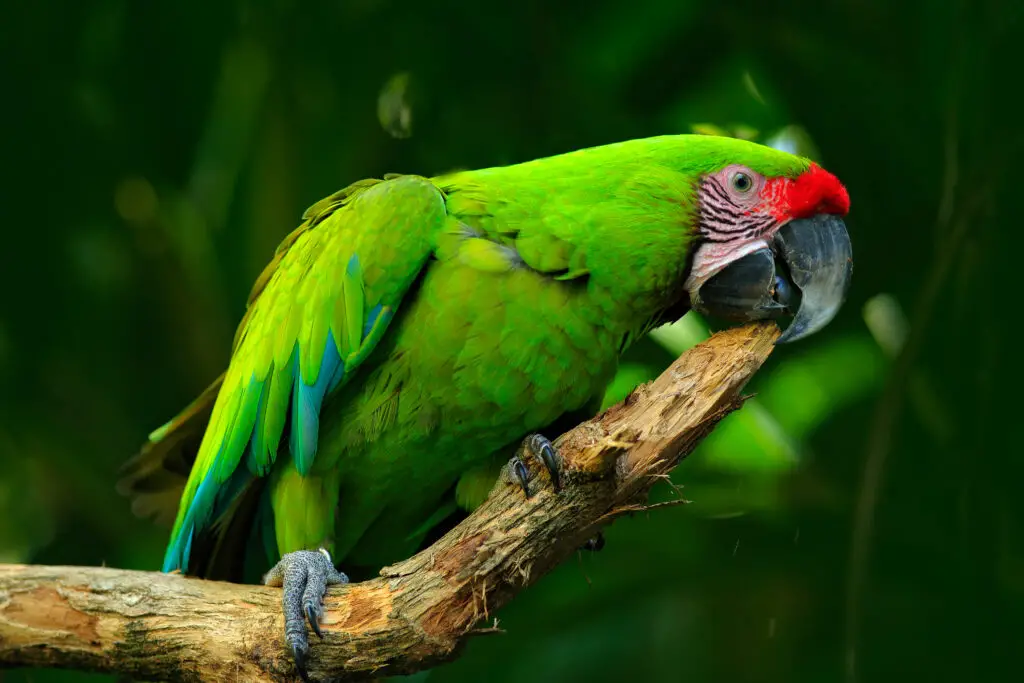
Where Parrots Live and Thrive: Discover The Natural Habitat of Parrots
Where do Parrots live: General Overview
Are you a fan of colorful, feathered creatures that can talk your ear off? Then you’re in luck because today we’re talking about parrots! These charismatic birds are known for their intelligence, playful personalities, and beautiful plumage. With over 370 species found all around the world, there’s never a dull moment when it comes to parrots.
Parrots are a unique group of birds that have captured the hearts of people all over the world. They are known for their impressive vocal abilities, with some species capable of mimicking human speech and even singing songs. But parrots aren’t just talented talkers – they also have incredible intelligence and problem-solving skills. In fact, some parrots have been trained to perform complex tasks and even solve puzzles!
One of the most striking features of parrots is their colorful feathers. From bright yellows and greens to deep blues and reds, parrots are a feast for the eyes. But their feathers aren’t just for show – they also play an important role in communication and social interactions. Parrots use their feathers to signal their moods and intentions to other birds, and to attract mates during breeding season. So whether you’re admiring their intelligence, their vocals, or their colorful plumage, there’s no denying that parrots are truly special birds!
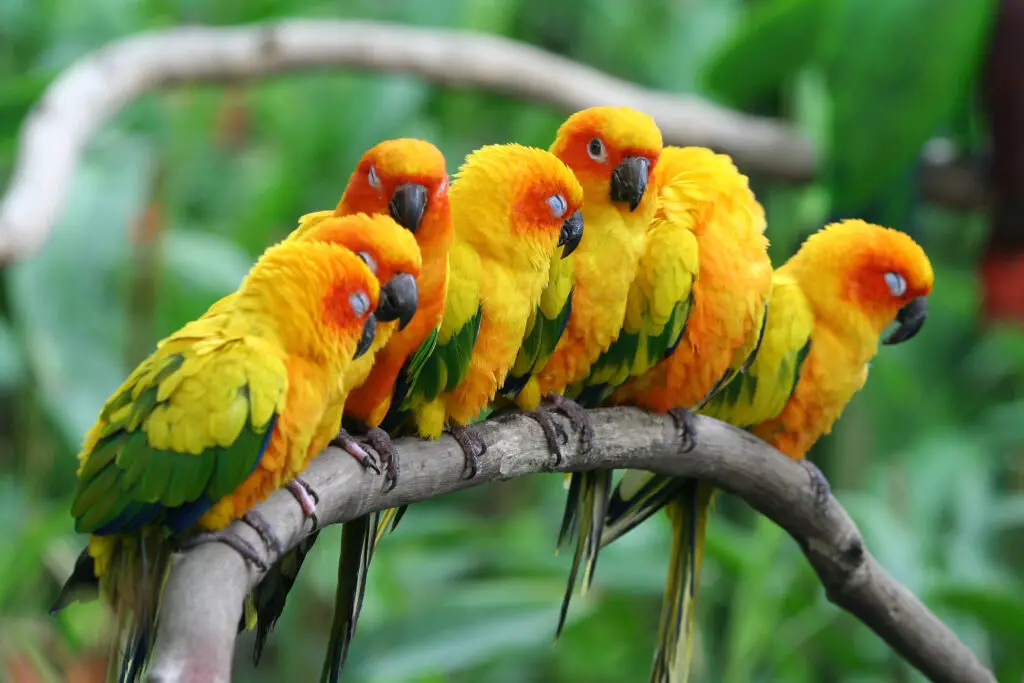
Distribution and Diversity of Parrots Across the Globe
Parrots come in all shapes, sizes, and colors, and they can be found in almost every corner of the world. From the lush rainforests of South America to the dry savannas of Africa, parrots have adapted to a wide range of habitats and climates. With over 80 genera and 370 species, there’s no shortage of diversity when it comes to these charming birds.
South America is home to the greatest number of parrot species, with Brazil alone boasting over 70 different types of parrots. But parrots can also be found in other regions, such as Asia, Africa, and Oceania. Australia, in particular, is known for its unique parrot species, including the iconic rainbow lorikeet and the endangered orange-bellied parrot.
Despite their wide distribution, many species of parrots are facing threats such as habitat loss, hunting, and illegal trade. That’s why conservation efforts are so important to ensure the survival of these incredible birds. By protecting their habitats and cracking down on illegal trade, we can help ensure that future generations will be able to enjoy the beauty and diversity of parrots around the world.

The Primary Habitat of Parrots
Tropical rainforests are the ultimate playground for parrots! With their towering trees, dense undergrowth, and diverse array of plants and animals, rainforests provide the perfect habitat for these colorful birds. Parrots in the rainforest are known for their acrobatic skills, their noisy chatter, and their love of juicy fruits and seeds.
In the rainforest, parrots have to be adaptable in order to survive. Many species have developed specialized beaks and tongues that allow them to crack open tough nuts and seeds, or extract nectar from flowers. Some parrots even eat clay, which helps to neutralize the toxins found in their diet. And of course, parrots are also known for their impressive vocal abilities, which they use to communicate with their flock and establish their territory.
But life in the rainforest isn’t always easy for parrots. Habitat loss and illegal trade are major threats to many species, and some are endangered or critically endangered. That’s why it’s so important to protect rainforest habitats and crack down on the illegal trade of parrots. By doing so, we can help ensure that parrots continue to thrive in their natural habitat and enchant us with their beauty and intelligence for generations to come.
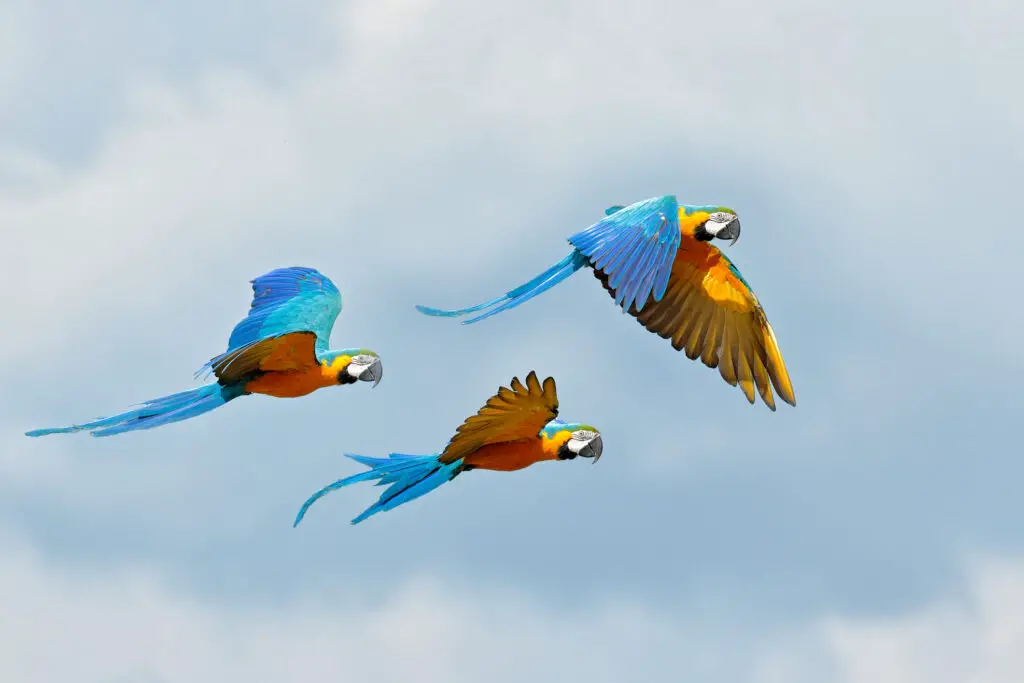
Other Habitats of Parrots, Including Forest Edges and Savannas
While tropical rainforests are the primary habitat of parrots, these colorful birds can also be found in a variety of other habitats, including forest edges and savannas. In fact, some species have even adapted to live in urban areas, such as parks and gardens, where they can be found squawking away on telephone wires and perching on street lamps.
Forest edges are the areas where forests meet open habitats, such as grasslands or savannas. These transitional zones are rich in food resources, including fruits, nuts, and seeds, making them ideal habitats for parrots. Some species, such as the blue-fronted Amazon, have even been known to make their nests in tree hollows along forest edges.
Savannas are another important habitat for parrots, especially in Africa and Australia. In these open grasslands, parrots have to be nimble and quick in order to avoid predators and find food. Many savanna-dwelling parrots feed on grass seeds and other vegetation, and some, like the Cape parrot, have even been observed feeding on aloe nectar.
Despite their adaptability, parrots in these habitats are still facing threats such as habitat loss and illegal trade. That’s why it’s important to support conservation efforts to protect these diverse habitats and the amazing birds that call them home. Whether you’re in the rainforest, the savanna, or the city, keep an eye out for these vibrant and intelligent creatures – you never know where you might spot a parrot!

Factors Affecting Parrot Habitat, Including Climate and Human Activities
Parrots may be adaptable, but they’re not invincible! A number of factors can affect their habitat and ultimately impact their survival. One of the biggest factors is climate. Parrots are sensitive to changes in temperature and rainfall, and even small variations can have a big impact on their food sources and nesting sites.
Human activities are another major threat to parrot habitat. Deforestation, mining, and agriculture all contribute to the loss of crucial habitat for these birds. Also, the illegal trade of parrots is a huge problem, with thousands of birds being captured and sold every year. This not only affects wild populations, but also creates demand for captive-bred birds, which can lead to poor breeding conditions and a lifetime of suffering for these intelligent and social creatures.
But it’s not all doom and gloom – there are also many people and organizations working to protect parrot habitat and raise awareness about the importance of conservation. By supporting these efforts, we can help ensure that parrots continue to thrive in the wild for generations to come.
So whether you’re a parrot lover or just a nature enthusiast, take a moment to think about the factors affecting parrot habitat and what you can do to help. Whether it’s supporting conservation organizations, reducing your carbon footprint, or simply spreading the word about the importance of protecting these incredible birds, every little bit helps!
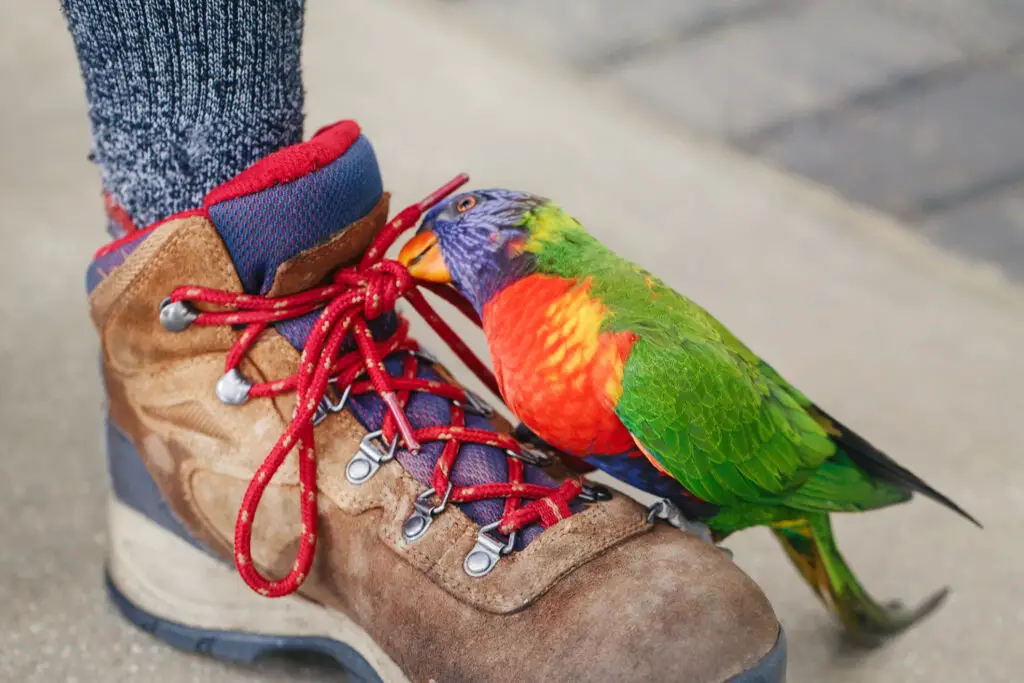
Species-Specific Adaptations of Parrots to their Habitats
Parrots are a diverse group of birds, and just like humans, each species has its own unique set of characteristics and adaptations that make it perfectly suited to its particular habitat. From their beaks to their feet, parrots have evolved a wide range of specialized traits that help them thrive in their environment.
For example, the thick-billed parrot, found in the pine-oak forests of Mexico and the southwestern United States, has a short, strong beak that allows it to crack open the tough cones of pine trees to reach the nutritious seeds inside. Meanwhile, the kea, a parrot species found in the mountainous regions of New Zealand, has a long, curved beak that it uses to dig into the bark of trees to find insect larvae.
Another example of species-specific adaptations can be seen in the hyacinth macaw, the largest of all parrot species. Found in the savannas and forests of South America, this impressive bird has a powerful beak that it uses to crack open tough nuts and seeds, as well as to excavate nesting cavities in trees. Its strong, curved talons allow it to cling to branches and climb up trees with ease.
Overall, the diversity of parrot adaptations is a testament to the amazing power of evolution. These birds have truly evolved to fit their particular habitats like a glove, and it’s fascinating to think about all the different ways that they have adapted to survive and thrive in the wild.

Parrots' Social Behaviors in the Wild
Did you know that parrots are some of the most social birds in the animal kingdom? These clever creatures are known for their ability to communicate with each other in a variety of ways, from vocalizations to body language. They also form close bonds with their mates and family members, often staying together for years or even their entire lives.
In the wild, parrots are highly social animals that live in flocks ranging from just a few birds to hundreds or even thousands. Within these flocks, individuals have distinct roles and hierarchies, and they communicate with each other using a variety of calls and gestures. They also engage in a number of social behaviors, such as preening each other’s feathers and sharing food, which help to strengthen their bonds and maintain social harmony. All in all, the social behaviors of parrots in the wild are truly fascinating to observe, and they provide us with a glimpse into the rich and complex social lives of these amazing birds.

Feeding Habits of Parrots in the Wild
Parrots are known for their colorful feathers and cheerful personalities, but did you know that they’re also very particular about their food? These clever birds have a wide range of feeding habits that allow them to survive and thrive in their natural habitats.
In the wild, parrots eat a variety of foods, including fruits, seeds, nuts, and insects. Some species have even been known to eat clay, which helps to neutralize toxins in their diet. Parrots are also skilled foragers, using their strong beaks and agile feet to extract food from a variety of sources, such as tree bark, flowers, and even other birds’ nests.
Another interesting aspect of parrot feeding behavior is their ability to adapt to changes in their environment. For example, some parrot species have learned to eat non-native plants that have been introduced to their habitat, while others have adapted to feeding on crops grown by humans. This adaptability is a testament to the resilience and intelligence of these incredible birds.
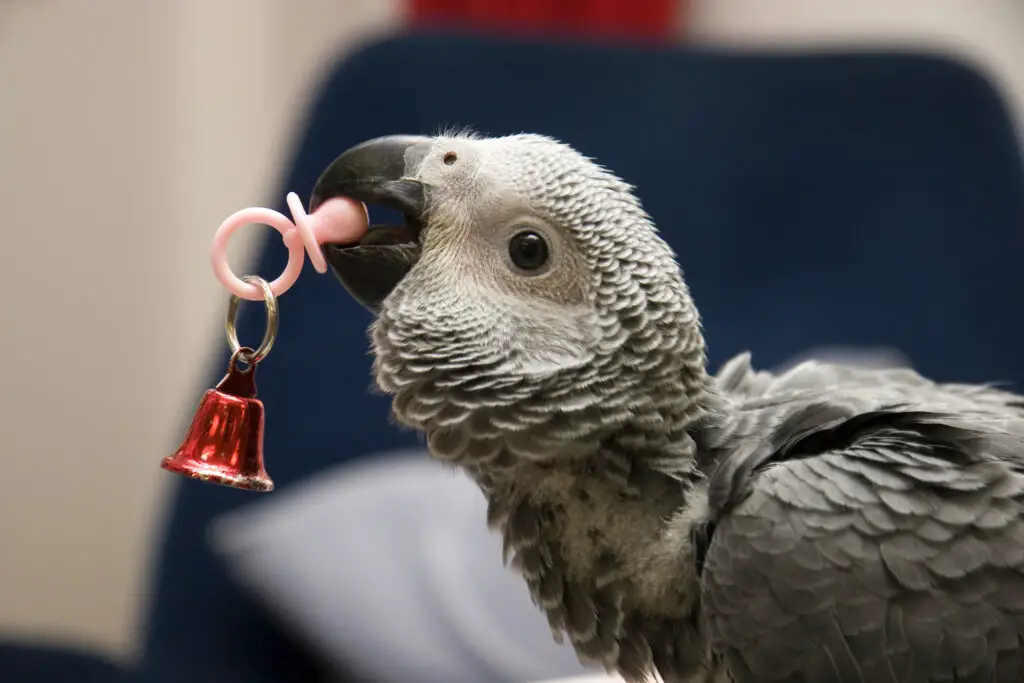
Breeding and Nesting Habits of Parrots in their Natural Habitat
Ah, love is in the air – for parrots, at least! These birds are known for their strong pair bonds and elaborate courtship rituals, which help to ensure the success of their breeding efforts in the wild.
In the wild, parrots typically breed during the spring and summer months, when food is abundant and the weather is warm. They build their nests in a variety of locations, from tree hollows to rocky cliffs, and use a variety of materials, such as twigs, leaves, and feathers, to construct them.
Once the nest is built, the female parrot will lay her eggs, which are typically white and glossy. Both parents take turns incubating the eggs and caring for the chicks once they hatch. Parrots are devoted parents and will fiercely defend their young from predators and other threats.
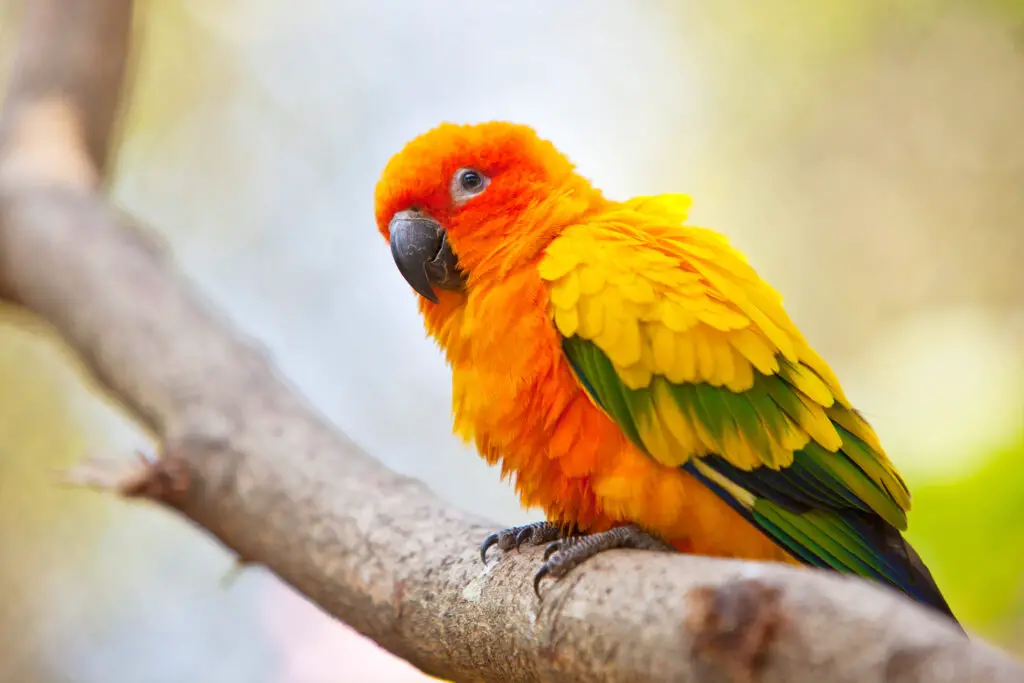
Migration Patterns of Parrots Across Different Regions
Some people who own Parrots might think that they’re homebodies, but these colorful birds are actually quite the travelers! Many species of parrots are known to migrate across different regions, often in search of food and nesting sites.
In some regions, parrots migrate seasonally, flying from one location to another to take advantage of changing food sources. For example, in parts of South America, parrots may move from lowland areas to higher elevations during the dry season, where food and water are more abundant.
Other parrot species are known to make more extensive migrations, traveling hundreds or even thousands of miles across different regions. For example, some species of parrots in Australia and New Zealand migrate between their summer and winter feeding grounds, covering vast distances across the continent.
Conservation Efforts for Parrot Habitats and Threats to Their Survival
Parrots may be some of the most colorful and beloved creatures on earth, but sadly, they’re also some of the most endangered. These birds face a range of threats to their survival, from habitat loss and poaching to climate change and disease.
Fortunately, there are many conservation efforts underway to protect parrots and their habitats. These efforts range from reforestation and habitat restoration projects to captive breeding programs and public awareness campaigns.
One key strategy for protecting parrot habitats is the establishment of protected areas, such as national parks and wildlife reserves. These areas provide critical habitat for parrots and other wildlife, while also offering opportunities for ecotourism and sustainable economic development.
Another important approach is the development of community-based conservation programs, which empower local people to take an active role in protecting their natural resources. These programs can include everything from habitat restoration and conservation education to sustainable farming and forestry practices.

How Humans Can Help Preserve Parrot Habitats and Their Populations
As humans, we have a huge impact on the world around us, and that includes the habitats and populations of parrots. But fear not, my feathered friends! There are many ways that we can help protect parrots and their habitats, and ensure that these amazing birds continue to thrive for years to come.
One key way to help preserve parrot habitats and populations is to support conservation organizations that are working to protect these birds. From donating to wildlife organizations to volunteering at local conservation projects, there are many ways to get involved and make a difference.
Another important way to help protect parrots is to reduce our own impact on the environment. This can include everything from conserving water and energy to reducing our use of plastic and other materials that can harm wildlife.

Final Thoughts
In conclusion, parrots are truly remarkable creatures with a unique place in the natural world. From their stunning colors and social behaviors to their remarkable adaptations and migration patterns, these birds have captivated the hearts and imaginations of people around the globe.
However, as we’ve explored in this article, parrots face a range of threats to their habitats and populations, from habitat loss and climate change to poaching and disease. Fortunately, there are many conservation efforts underway to protect these birds and their environments, and there are many ways that we can all help contribute to these efforts.
Whether it’s through supporting conservation organizations, reducing our own impact on the environment, or simply spreading the word about the importance of parrot conservation, we can all play a part in protecting these amazing birds and ensuring that they continue to brighten our world for generations to come. By working together and taking action, we can help ensure a bright and colorful future for parrots and all the amazing wildlife that shares our planet. Until next time, Keep on squawkin’ and rockin’ those bright colors, my feathered friends!

Alan Winters
Alan is a dedicated bird enthusiast and experienced writer who has been sharing insights on bird care and behavior for several years. With a passion for parrots in particular, Alan has a deep understanding of their unique needs and behavior patterns.
As a trusted authority in the field of bird care, Alan takes pride in sharing accurate and up-to-date information with his readers. Through his writing, he aims to educate and inspire bird owners of all experience levels to provide the best possible care for their feathered friends.
When not writing about birds, Alan can be found volunteering at local bird sanctuaries and rescues, where he enjoys putting his knowledge and experience to use helping birds in need.
